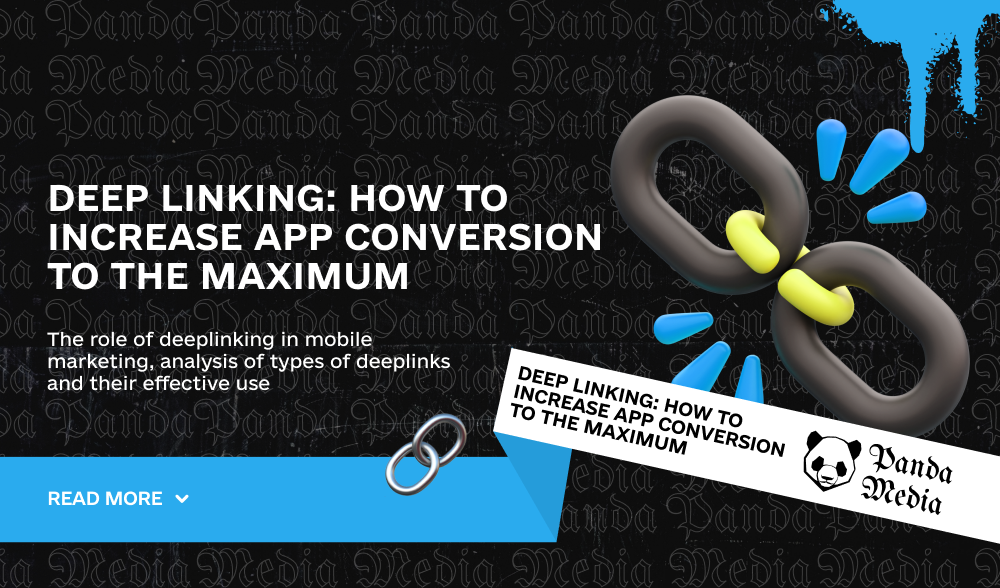
Diplinking is a term you’ve probably already heard in your professional environment. It is associated with improving user experience, increasing conversions, and growing revenue.
Diplinks are unique links that allow customers to go directly to the desired page in an app, bypassing the homepage of a website or app store. It is an innovative mobile marketing tool that directs users directly to targeted content, whether promotions or specific products, saving them time and effort.
Diplinking is particularly useful in the context of increasing user interaction and satisfaction, providing a seamless transition from a product’s social media ad to its mobile app page. While this technology is already in active use on personal computers, its potential on mobile platforms has yet to be fully realized.
Diplinking opens new horizons for increasing customer loyalty, as it makes it easier to find the right products and services, encouraging repeat visits and purchases. It also serves as an important tool to attract new users and retain existing ones by offering them an optimized and smooth user experience. As a result, diplinking becomes a key element of a mobile marketing strategy to increase user engagement and improve their interaction with the app.

Diplinking is a powerful tool in the mobile app world that opens up new opportunities for marketers and developers. Imagine a situation where you have developed a music app and want to attract attention to a new track. Thanks to diplinking, you can directly redirect the user from the ad to a specific page in your app where they can listen to the song in its entirety, rather than being limited to viewing the cover art on a third-party site.
This tool is also indispensable in bringing back inactive users. With diplinking, they can be directly redirected to a page with a one-click purchase offer, bypassing the need to manually search for a product or enter a promo code.
The use of diplinking not only makes interaction with the application more convenient for the user but also significantly increases the effectiveness of advertising campaigns, contributing to increased conversion and retention rates. Thus, diplinking becomes a key element of the retention and engagement strategy in mobile marketing, providing deeper and better user interaction with the app.

In the retail industry, diplinking is becoming a crucial tool to direct consumers to the pages they are interested in, thus improving conversion rates. Statistics show that most mobile users prefer to make purchases directly through an app. That’s why diplinking is proving to be a real boon for mobile advertising and email marketing, especially against the backdrop of the growing importance of social media in the buying process.
Facebook’s Alicia LeBeouf emphasizes that almost 80% of consumers use Facebook apps to search for purchases during the holiday season, indicating the significant potential of social media as a channel for customer engagement. Diplinks can be used to effectively respond to consumer behavior, such as sending offers to customers who have not placed an order or engaging departing users in repeat purchases, thereby increasing the chances of completing a transaction.
However, the question arises as to what to do with those who have not yet installed your app. This is where delayed diplinks come to the rescue, which redirects new users to the app store to download and then automatically navigate to the desired page after installation. This not only simplifies the user journey from advertisement to purchase but also reduces the risk of losing potential sales.
In this way, diplinking opens up opportunities for retailers to improve the efficiency of mobile commerce by providing a smooth customer journey from interest to purchase and making the process of interacting with an app more intuitive and enjoyable.

The diplinking engine provides brands and app developers with many opportunities to improve user experience and drive app growth.
Relatively simple solutions include:
More sophisticated strategies include:
It is important to understand the difference between diplinking itself and the diplinking mechanism:
As such, diplinking is a valuable tool for mobile marketing, allowing brands and developers to optimize the user journey from the first interaction to the end goal, be it purchase, app installation, or loyalty building.
In mobile marketing and apps, diplinking plays a key role in directing users directly to the desired content within the app. There are two main types of diplinks: regular and deferred, each with its features and applications.
Normal diplinks effectively direct users to an app if it is already installed on the device. If the application is not present, the user is faced with an error message because the assigned access point cannot be reached. This type of diplinks is often used in retargeting campaigns to address users with the app already installed.
Pending diplinks offer a more complex mechanism: if the app is not installed, the user is redirected to the app store to download it and then navigate to the desired content within the app after installation. This mechanism requires the integration of specialized SDKs and is used to attract new users and improve the user experience on first contact with the app.
Contextual diplinking enriches the functionality of regular and delayed diplinks with additional parameters that marketers can use to convey the deeper context of a promotion or offer. Such links can store data about a specific product, offer, or location in the app to which the user should be directed. This allows for more personalized and targeted campaigns.
The use of diplinking opens new horizons for developers and marketers, offering a variety of ways to improve interaction with the app and increase its effectiveness. The choice of diplink type determines the strategy for interacting with the target audience and the effectiveness of marketing campaigns.

Diplinks offer a powerful tool for improving user experience and conversions in mobile apps. Here are four important recommendations to help maximize their effectiveness:
The goal of a diplink is to make the user’s path as convenient and quick as possible, bypassing the need to search for the right page or product. A diplink directs the user directly to where they need to go, saving them significant time and effort.
On the iOS 15+ platform, there are certain limitations to pending diplinks, especially if the user has not consented to be tracked. In such cases, deterministic attribution becomes impossible, limiting the ability to match a click to an app install. Android owners face fewer limitations in this regard, allowing for more flexible campaign customization.
In the context of SKAdNetwork and Apple’s new data tracking rules, it is important to consider that conditional diplinks may direct existing users directly to the app, while new users may not be redirected to the App Store. This is significant for planning advertising campaigns, especially during periods of high demand such as holiday seasons.
Identifying and targeting engagement with users who have left or who have not completed a purchase through email or diplink targeting ads can significantly increase this audience’s response to your offers and encourage their re-engagement.
By applying these tips, companies can significantly improve the effectiveness of their mobile campaigns, increase user satisfaction, and optimize conversion rates by using diplinking as a strategic tool in their marketing efforts.
Subscribe and get the latest news, material announcements, and unique offers first.